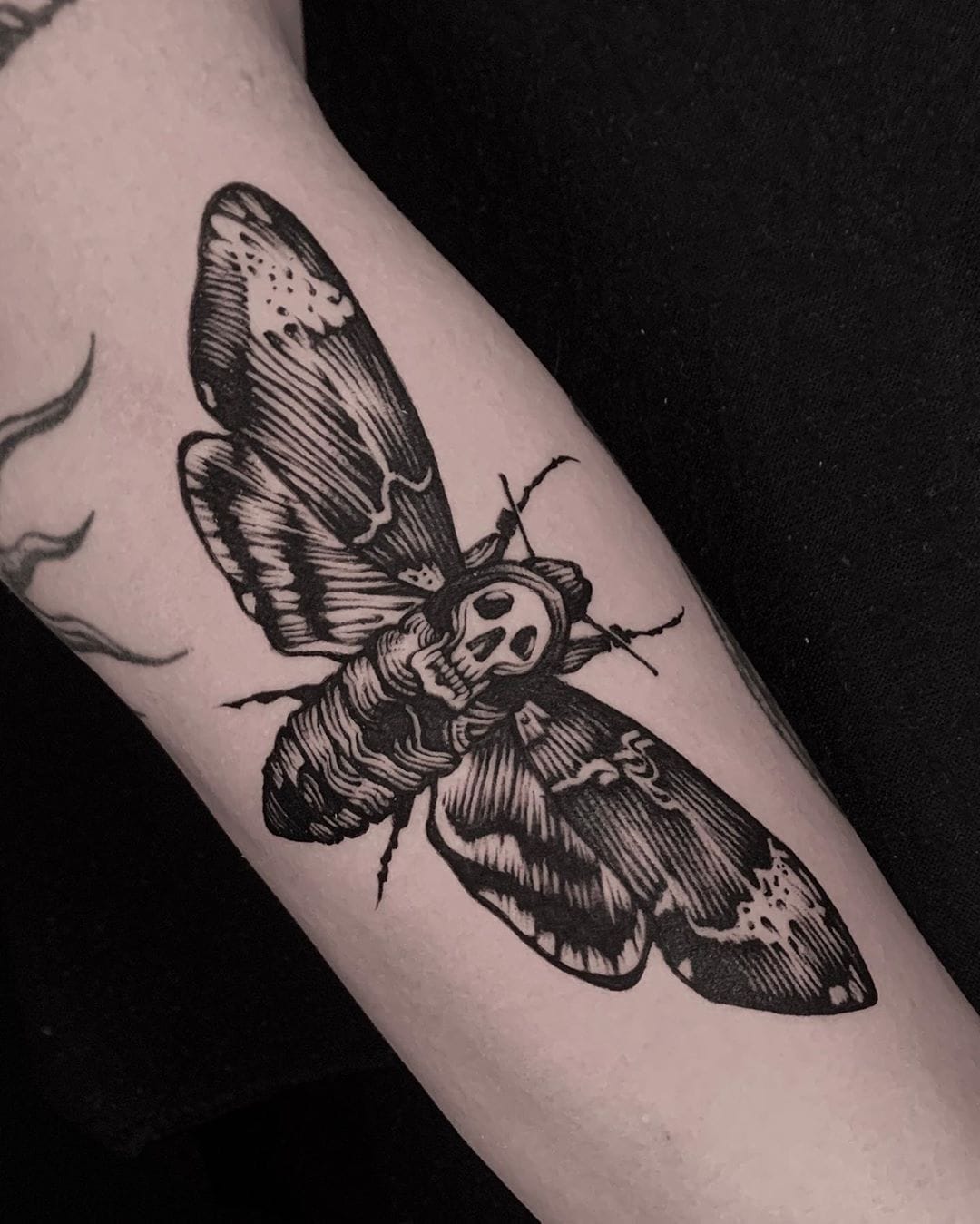The Silence of the Lambs captivated audiences with its chilling portrayal of psychological horror. Central to the film’s unsettling atmosphere is the death’s-head hawkmoth, a creature whose symbolism adds layers of meaning to Buffalo Bill’s disturbing narrative. This article delves into the moth’s significance, exploring its connection to transformation, its role in horror tropes, and its enduring impact on popular culture.
The Moth’s Significance: Transformation and Terror
In the film, the death’s-head hawkmoth isn’t merely a decorative element; it’s a potent symbol deeply intertwined with Buffalo Bill’s (Jame Gumb’s) twisted psyche. Bill’s obsession with creating a “woman suit” from his victims’ skin reflects a desperate desire for transformation, a grotesque metamorphosis mirroring the moth’s own life cycle. The placement of death’s-head hawkmoth pupae in his victims’ throats further amplifies the horror, signifying not only their silenced screams but also Bill’s warped perception of rebirth.
This connection to transformation is further reinforced by the moth’s natural metamorphosis, a process that likely resonated with Bill’s desire to shed his current identity. He envisions himself undergoing a similar rebirth, albeit through horrific means. The moth, with its skull-like marking and nocturnal habits, embodies the macabre nature of Bill’s aspirations. Some experts believe this fascination stems from deep-seated feelings of inadequacy and confusion, driving him to seek a violent and unnatural form of change.
Decoding the Species: Atropos vs. Styx
Adding another layer of complexity is the distinction between the moth species used in the film and the one depicted on the iconic poster. The film primarily features Acherontia styx, the Southeast Asian death’s-head hawkmoth, recognizable by the orange discal spot on its wings. However, the poster showcases Acherontia atropos, the African death’s-head hawkmoth, with a distinct white discal spot. This discrepancy raises questions about the filmmakers’ intentions. Was it a deliberate choice to amplify certain symbolic aspects, or simply an oversight? Further research into the poster’s design process could shed light on this intriguing detail.
Both species share the distinctive skull-like marking on the thorax, a feature that has long associated the death’s-head hawkmoth with death, evil omens, and the supernatural across various cultures. This pre-existing symbolism contributes to the moth’s unsettling aura in the film, tapping into primal fears and amplifying the sense of dread.
Curious about other intriguing ingredients? Discover the rumchata ingredients. For those with a green thumb, explore the beauty of thornless roses.
Cultural Significance and Psychological Impact
The death’s-head hawkmoth’s symbolism extends beyond The Silence of the Lambs. In folklore and mythology, it has been associated with death, misfortune, and even communication with the spirit world. This rich history adds depth to its cinematic portrayal, suggesting that the moth represents more than just Bill’s personal transformation. It can be interpreted as a symbol of the inherent duality of life and death, the fragility of existence, and the darkness that can fester within the human mind.
The moth’s appearance in other works of literature, such as Bram Stoker’s Dracula, further solidifies its place in popular culture as a symbol of the macabre. Its inclusion in various artworks throughout history underscores its enduring fascination and symbolic power. Ongoing research continues to explore these cultural variations and interpretations, suggesting that there is still much to uncover about the moth’s multifaceted significance.
The film’s poster, designed by Dawn Baillie of BLT Communications, masterfully employs the moth to create a chilling visual. The close-up of Clarice Starling’s face with the Acherontia atropos superimposed over her mouth is both striking and unsettling. This deliberate placement suggests the silencing of victims, their voices stifled by Bill’s predatory actions. It also hints at the predator/prey dynamic, with the moth representing Bill’s insidious presence and the vulnerability of his victims.
The poster’s psychological impact is undeniable, evoking feelings of fear, vulnerability, and unease. The juxtaposition of the moth’s beauty with the skull marking and its placement over Clarice’s mouth creates a powerful contrast, enhancing the overall sense of horror. The use of negative space further contributes to the poster’s unsettling effect, drawing the viewer’s eye to the central image and amplifying its symbolic weight.
Beyond the Surface: Untapped Potential
While much has been written about the death’s-head hawkmoth in The Silence of the Lambs, there are still avenues for further exploration. A deeper analysis of the deliberate choice of Acherontia atropos for the poster could provide valuable insights into the filmmakers’ intentions. Examining the psychological underpinnings of Bill’s obsession with the moth, beyond the surface level of transformation, could reveal deeper layers of his disturbed psyche. Furthermore, exploring the moth’s symbolism in different cultures and its portrayal in art and literature could enrich our understanding of its multifaceted meaning.
By delving into these untapped areas, we can gain a more comprehensive appreciation for the death’s-head hawkmoth’s enduring power as a symbol of transformation, terror, and the mysteries of the human mind. It serves as a chilling reminder of the darkness that can lurk beneath the surface, prompting us to confront our own fears and anxieties about mortality, identity, and the fragility of life.
- Unlock Elemental 2 Secrets: Actionable Insights Now - April 2, 2025
- Lot’s Wife’s Name: Unveiling the Mystery of Sodom’s Fall - April 2, 2025
- Photocell Sensors: A Complete Guide for Selection and Implementation - April 2, 2025

















2 thoughts on “The Death’s-Head Hawkmoth: Unraveling the Twisted Symbolism in The Silence of the Lambs”
Comments are closed.